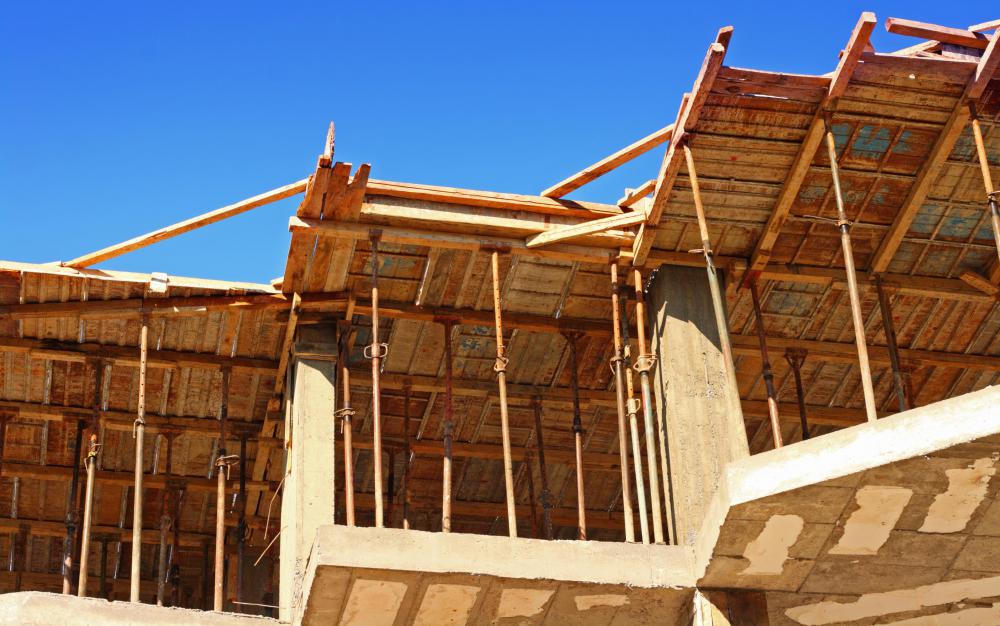At PracticalAdultInsights, we're committed to delivering accurate, trustworthy information. Our expert-authored content is rigorously fact-checked and sourced from credible authorities. Discover how we uphold the highest standards in providing you with reliable knowledge.
What Does a Formwork Carpenter Do?
A formwork carpenter is a type of skilled worker who specializes in constructing formwork that acts as a mold in which concrete can be poured and supported until it sets. This type of carpenter will work with various types of formwork and falsework to create a usable mold before any concrete pouring processes begin. The formwork carpenter may or may not also help in the process of pouring the concrete and monitoring as it sets. Once the concrete has set fully, the carpenter will be responsible for removing the falsework and formwork.
"Falsework" refers to rods, bars, clamps, and other items that are used to secure formwork in place. "Formwork" refers to panels that are constructed to act as the molds. A formwork carpenter may work with wooden forms made from plywood, or he or she may work with steel forms. Other form materials are available as well, and the formwork carpenter will need to make an assessment of a particular job to determine which material will most adequately support the project. He or she will also need to determine whether the forms will be permanent or temporary, as well as in what order the concrete should be poured. The number of form panels, as well as the amount of falsework, will need to be determined by the carpenter as well so a delivery of materials can be made to a job site.

As the pouring process begins, the formwork carpenter may make adjustments to the forms as necessary, though in most cases the forms must be securely in place before the pouring process begins. Once the concrete has been poured, the carpenter will need to inspect the forms to ensure they are holding up properly and are not leaking concrete. After the concrete has set, the formwork carpenter will remove the forms, clean them, and prepare them for transport or storage. Sometimes panels must be discarded because they are no longer usable as forms; the carpenter will need to make a thorough analysis of each panel to ensure it is still usable.

Little formal education is necessary in order to become a formwork carpenter, though the ideal candidate will hold at least a high school diploma or equivalent qualification. On the job training is usually sufficient, though some vocational or trade schools will offer coursework on formwork carpentry. The carpenter is likely to undergo an apprenticeship, during which time he or she will work with a more experienced carpenter to more adequately learn the skills and techniques necessary to create effective forms.
AS FEATURED ON:
AS FEATURED ON:












Discuss this Article
Post your comments